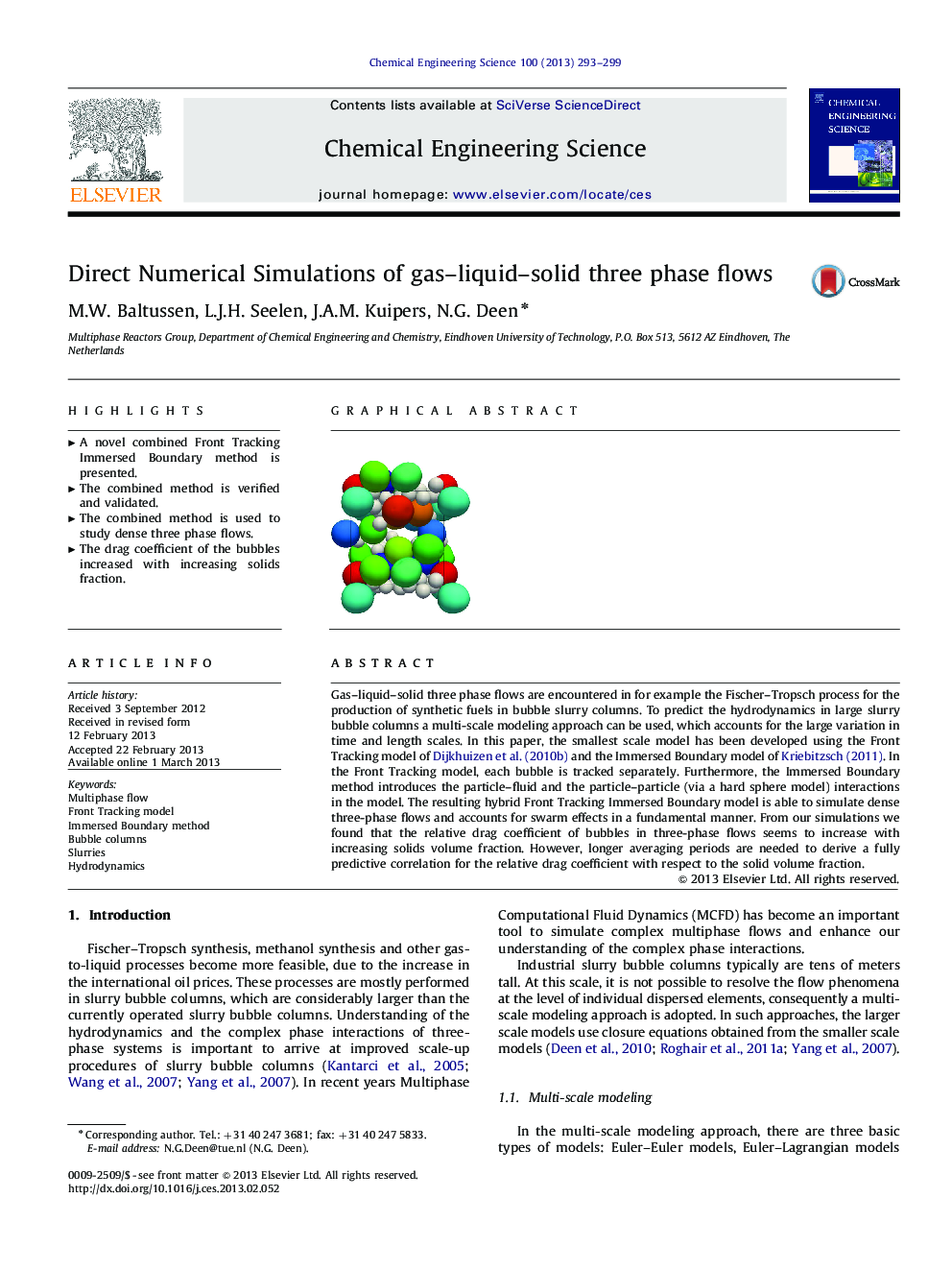| کد مقاله | کد نشریه | سال انتشار | مقاله انگلیسی | نسخه تمام متن |
|---|---|---|---|---|
| 155075 | 456883 | 2013 | 7 صفحه PDF | دانلود رایگان |

Gas–liquid–solid three phase flows are encountered in for example the Fischer–Tropsch process for the production of synthetic fuels in bubble slurry columns. To predict the hydrodynamics in large slurry bubble columns a multi-scale modeling approach can be used, which accounts for the large variation in time and length scales. In this paper, the smallest scale model has been developed using the Front Tracking model of Dijkhuizen et al. (2010b) and the Immersed Boundary model of Kriebitzsch (2011). In the Front Tracking model, each bubble is tracked separately. Furthermore, the Immersed Boundary method introduces the particle–fluid and the particle–particle (via a hard sphere model) interactions in the model. The resulting hybrid Front Tracking Immersed Boundary model is able to simulate dense three-phase flows and accounts for swarm effects in a fundamental manner. From our simulations we found that the relative drag coefficient of bubbles in three-phase flows seems to increase with increasing solids volume fraction. However, longer averaging periods are needed to derive a fully predictive correlation for the relative drag coefficient with respect to the solid volume fraction.
Figure optionsDownload high-quality image (128 K)Download as PowerPoint slideHighlights
► A novel combined Front Tracking Immersed Boundary method is presented.
► The combined method is verified and validated.
► The combined method is used to study dense three phase flows.
► The drag coefficient of the bubbles increased with increasing solids fraction.
Journal: Chemical Engineering Science - Volume 100, 30 August 2013, Pages 293–299